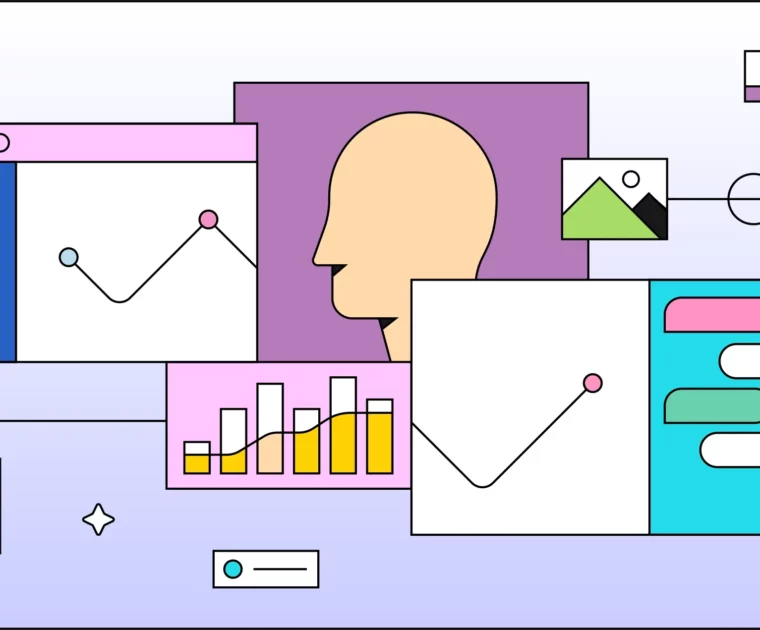The Brand-Influencer Dynamic Was Forever Changed in 2020
A few days ahead of the General Election, we released the report, Real Influence: The State of Influencer Marketing After the Events of 2020. In it, we analyzed the events of 2020 within the context of a social media landscape where, in an effort to serve their online audiences, influencers made the shift from internet lifestyle celebrities to being bona fide web-based community leaders. And I don’t think many brands noticed.
Here’s Why This Particular Shift Even Matters
Historically, brands have made it a habit to stay silent on hot-button topics. So, they have also been reluctant to partner with influencers who take strong stances on controversial issues like religion and politics.
But now that more influencers are taking ownership of their platforms and using them to further causes that extend beyond an outfit-of -the-day post, brands are forced to pay closer attention to the influencer’s values and allegiances as part of the normal influencer selection process. These influencer-led shifts have also normalized this expectation that brands should productively and tangibly participate in the communities in which they do business, which we’ve actually been seeing lately with the events that happened in D.C. and the very public response by companies
Real Influence: The State of Influencer Marketing After the Events of 2020 from The Shelf
We Know Life Changed, But So Did Influencers
We’re all well aware that the pandemic brought with it a slew of changes. Brands and marketers spent much of 2020 adapting to those changes. With supply chains interrupted and consumers staying home, it made sense when brands slashed marketing budgets and converted their KPIs from brand lift and acquisition to conversions and retention.
But as brands paused their marketing spend to figure out how to handle the shift, a provocative idea emerged: would COVID-19 bring an abrupt end to the influencer marketing industry?
Influencer marketing has traditionally been seen as a brand awareness strategy (pretty much because marketing teams still have a hard time building influencer campaigns to specifically accomplish different goals). That said, it also made sense that with brands shifting away from awareness campaigns, social media influencer marketing – and thus influencers – would be impacted by that shift.
And influencers were impacted, but not in the way the detractors hoped. So, I want to break down the three important shifts that happened in the social media influencer marketing space over the course of 2020 that really helped us all to spot the differences between the influencer marketing vs traditional marketing. These shifts and the supporting data are detailed in The Shelf’s Real Influence report.
BIG SHIFT #1: RESPONSIVENESS
Influencers were the first to pivot their messaging during the early weeks of COVID-19.
When brands silenced their marketing messages as COVID-19 moved across the world, influencers were the first to successfully pivot their own messaging.
Their success incentivized brands to partner with influencers BECAUSE influencers had a better gauge on audience sentiment than most brands had. Seems a small thing, but it’s actually pretty telling:
The pervasive notion is that influencers are creating content strictly to monetize their audiences – making money without getting “real jobs”. But when COVID first started its steamroll over the earth, brands had no way of knowing when things would start getting back to normal and no idea what to say to their consumers. Initially, many brands remained silent.
But influencers – especially nano and micro influencers – are great at listening and responding. So, influencers were able to not only shift the way in which they engaged with their audiences, but they also guided brands into facilitating different types of connections with their consumers. And that kind of real-time feedback and responsive is one of the HUGE benefits of influencer marketing.
BIG SHIFT #2: LEADERSHIP & OWNERSHIP
Influencers took ownership of their roles as bona fide community leaders.
The “normalcy” created by online communities during those first few months of the pandemic’s spread was largely the work of influencers who were creating content around topics that would help people ADJUST to life indoors.
Instagram went from being everybody’s favorite photo-sharing app to being a safe place for people to share their experiences and their feelings. In 2020, Instagram also outpaced Twitter as the primary social media platform for staying up to date on breaking news.
Influencers used hashtags to help people topically identify productive ways to fight back lockdown-induced cabin fever. These makeshift mental health “hashtag hubs” drew millions to Instagram who would otherwise have been separated from their friends, coworkers, and even families during the lockdown and subsequent social distancing guidelines.
During the summer of 2020, influencers used hashtag hubs to organize a global (yes, GLOBAL) social movement to spark action in more than 4,000 cities on six continents. No billboard’s going to have that kind of impact.
BIG SHIFT #3: ACCOUNTABILITY
Influencers gained leverage by demanding transparency, accountability, and action from brands.
One of the most telling shifts that took place in the influencer space was the call for greater transparency and more accountability from brands, which was a first in the history of influencer marketing.
With the global community under the perpetual threat of a seemingly unstoppable pandemic, thousands of small businesses were shuttered, many permanently. Influencers called on brands and local governments to step and behave more like citizens than institutions. And many brands answered the call, providing assistance to help small businesses survive the lockdown, and financial support to community organizations who took it upon themselves to provide food and aid for families hit hardest by the economic downturn.
Influencers also pushed brands to use the worldwide downtime and social movement as the catalyst for brands to install and roll out new policies on diversity and inclusion, such as:
- hiring more people of color as decision-makers
- Implementing more accurate representation in their marketing efforts
- paying minority influencers and contractors the same competitive rates as white influencers and contractors
COPY and PASTE THIS 👇 CODE to EMBED THIS ☝️GRAPHIC.
The Conclusion of the Matter
Folks, the social media influencer marketing space matured in 2020, and influencers proved their intrinsic value, beyond just landing brand ambassadorships to post sponsored content for brands. The three shifts outlined in this post and detailed in the Real Influence report point to a fundamental shift in the brand-influencer dynamic.







